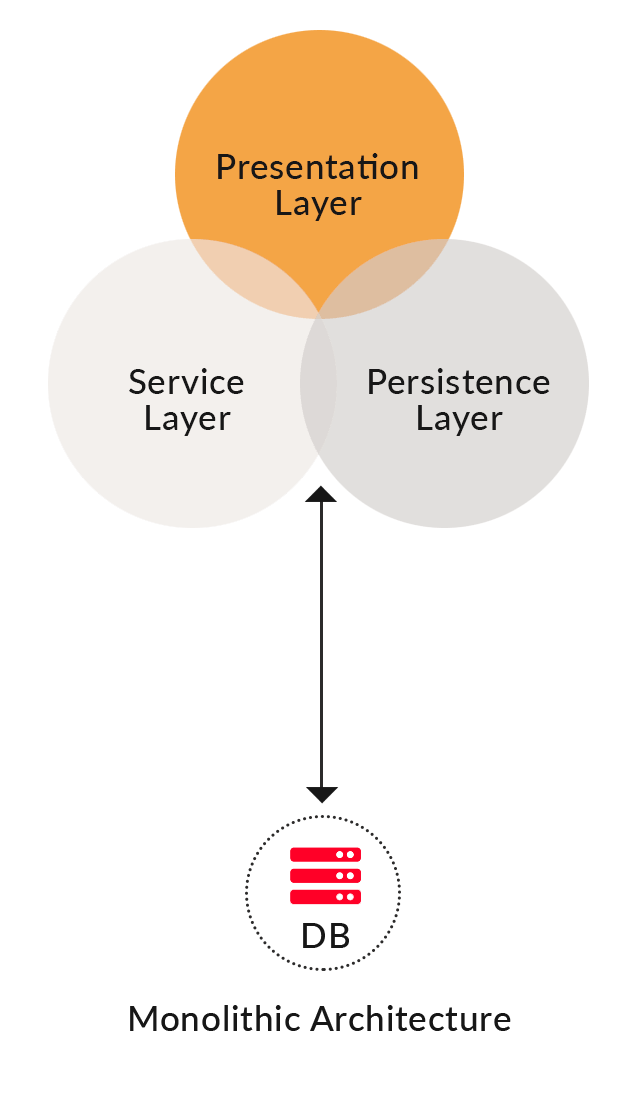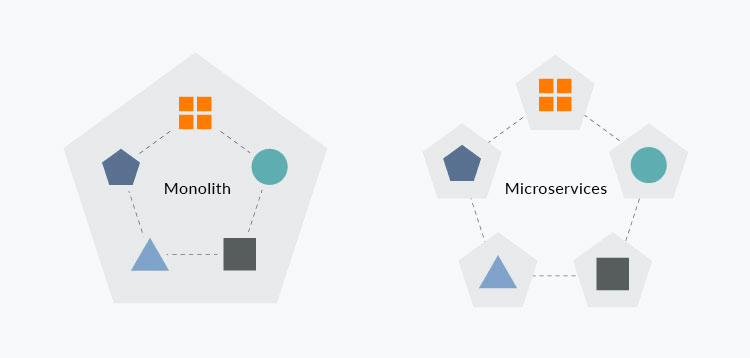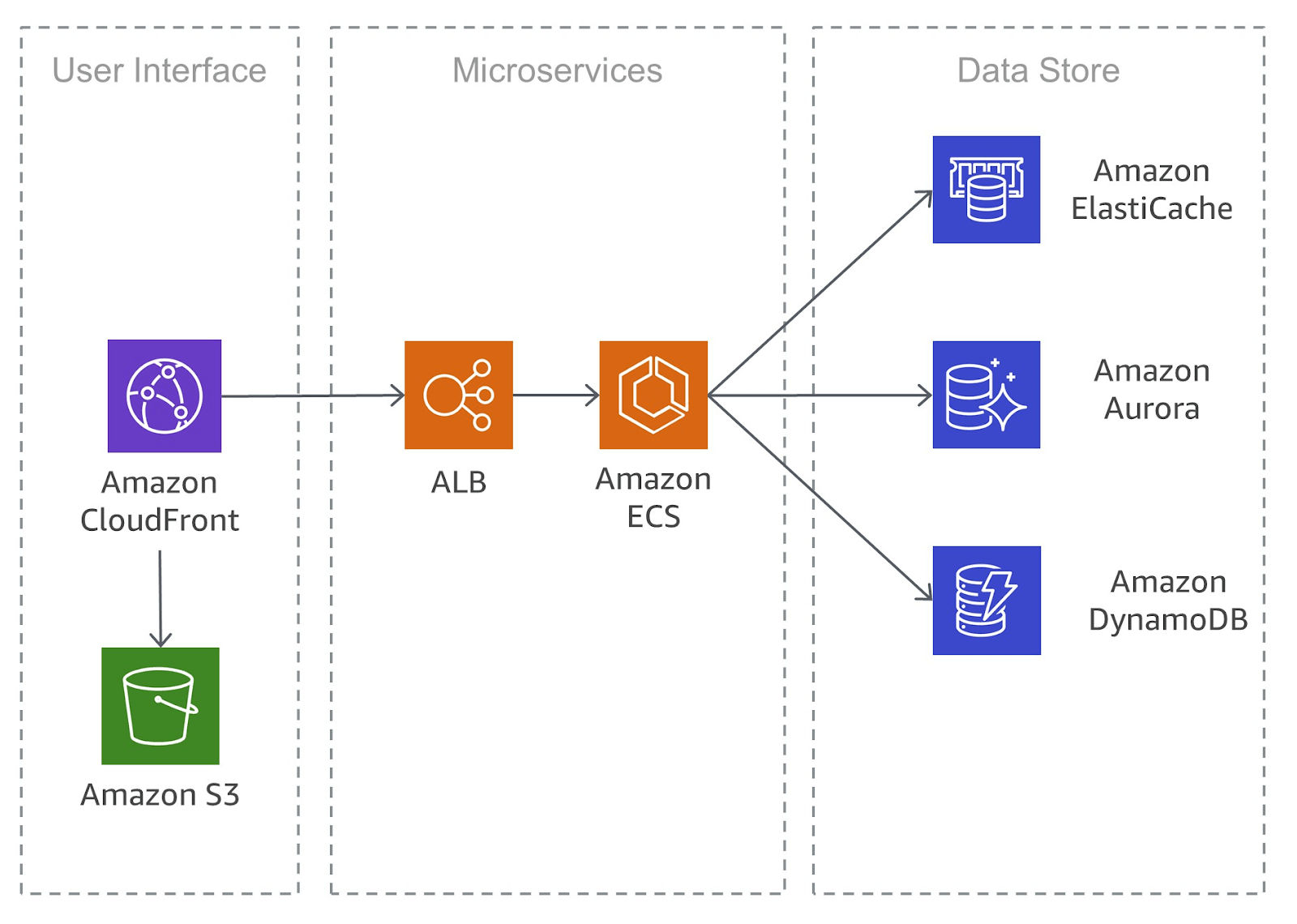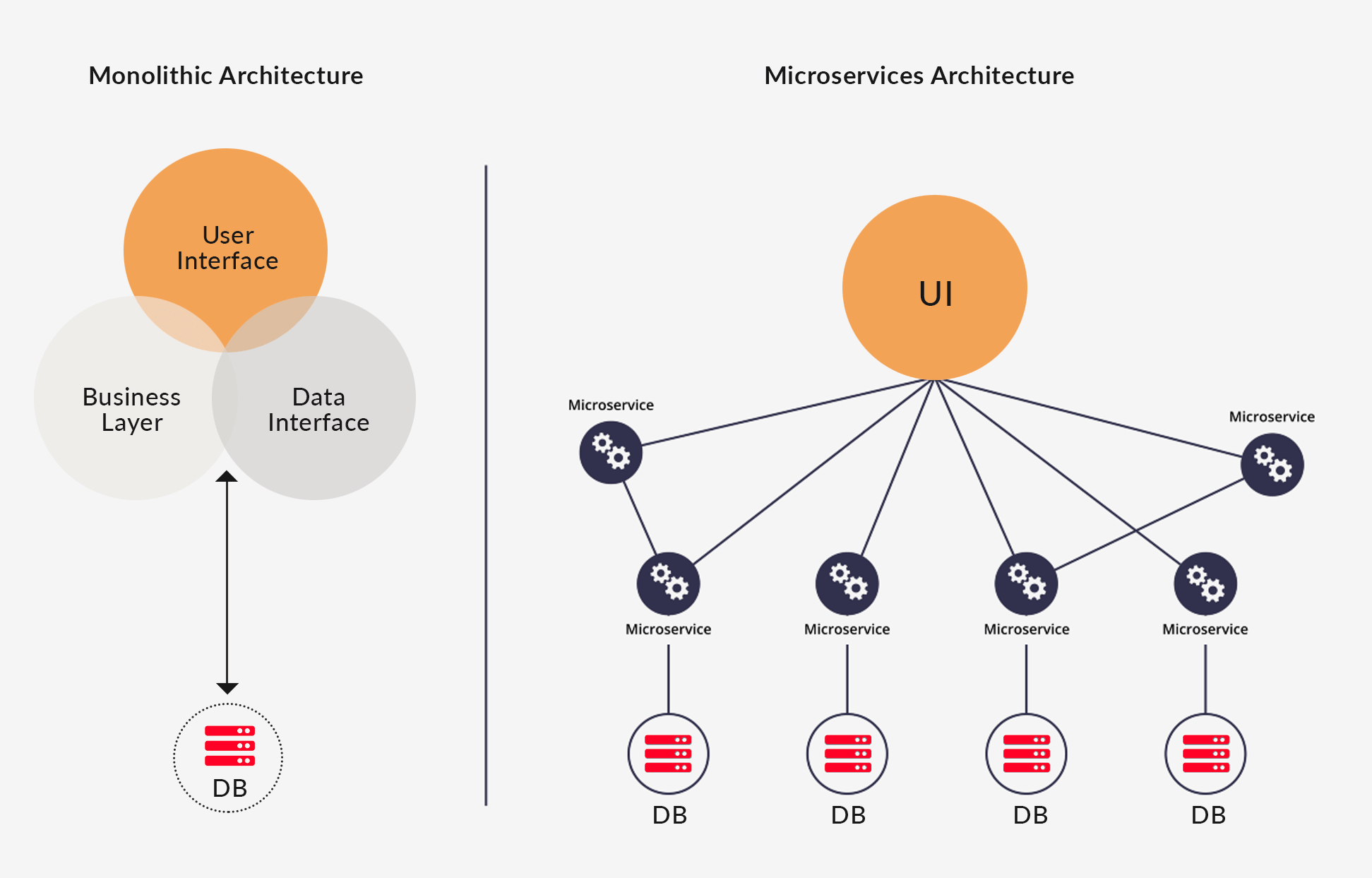Microservices vs Monolithic Architecture: Is Deploying Faster and Scalable Applications Your Priority?
In the current competitive and fast paced business landscape, Microservices are edging over legacy Software Monoliths to meet the demands of application builders for a much faster deployment time to the market.
Microservices are continuing to gain popularity post their endorsement from major brands like Amazon, Google, PayPal and Netflix. In 2018, Camunda conducted a global survey across 354 enterprises bringing out the fact that 60% of its respondents were keen on incorporating microservices framework in their processes.
And to know why it is the obvious choice in the current global application landscape, we first need to understand the basics.
So, What exactly is a Monolithic Application?
Irrelevant of the business size of the company, most of the organizations including startups, SMB’s or Enterprise’s have built or have been building monolithic applications by analyzing a problem statement and as per that designing a system with multiple functionalities.
The traditional approach of designing an application is to design it in layers like presentation, service and persistence and then deploy that codebase as a single file. That is exactly where the monolithic application got its name from, where “mono” represents single code for multiple functionalities.

In a monolithic application, all functions are managed and served in one place. The inner structure of the app which consists of a database, client-side interface, business logic remains an indivisible unit and their components don’t require API to communicate.
What led us to make a move from Monolithic to Microservices Architecture?
Monolithic architecture is an apt choice for small-sized applications with benefits of having a single codebase with multiple features/functionalities. But that soon becomes chaotic & uncontrollable as the application begins to evolve with additional features and functionality.

There are certain limitations following the traditional monolithic architecture approach like –
Size & Scalability
- Codebase becomes significantly larger with time and harder to understand. Eventually, the integrated development environment becomes overloaded which slows down the startup time of an application.
- While developers do have an option to create new instances and balance loads to distribute traffic, monolithic architecture becomes difficult to scale with increasing load and conflicting resource requirements for different modules.
Fault Tolerance & Reliability
- Reliability is not what you can expect from monolithic applications, as a single bug in one of the modules can cripple down the entire application.
- If a specific part of the application is facing huge chunks of load/ traffic, new instances of the whole application have to be deployed in multiple servers to optimize routing & delivery which would in turn require unnecessary resources affecting the cost and uptime.
Flexibility & Management
- Each module of a monolithic application is an indivisible unit. Hence, if a new developer gets assigned to the project to build a particular functionality, he/she must understand the logic of the large monolithic application whilst consuming unnecessary time and cost.
- Monolithic application limits you to adopt new technologies which could be apt for a particular functionality. Team has to follow the same tech stack which is decided at the start of the project which makes upgrades a next to impossible task.
Increased Time-To-Market
- With each module interconnected with each other, a monolithic application can’t be deployed till the entire codebase has been developed.
- Also, during the testing phase if a particular functionality stops working. the entire application has to be analyzed which further adds to the deployment time.
How is Microservices Architecture different?
The current microservices architecture is an evolved form of SOA (Service Oriented Architecture) which was introduced in early 2000’s to deal with limitations faced in monolithic architecture. In a microservice architecture, business logic is split up into multiple lightweight, single-purpose self-sufficient services.
Earlier in SOA, communication between multiple services used to happen through ESB (Enterprise Service Bus) which acted as a middleware having different messaging standards without any guidelines for independent databases. With the evolution over time, SOA was fine-grained for microservices where each of the services can communicate directly with each other without any central dependency on ESB.
As compared to monoliths where each module is tightly coupled, in microservices framework, the dependency of the modules is not quite explicit, making it loosely coupled. Hence, any upgrades in specific functionalities becomes an easier task without affecting the entire application. This is one of the major reasons why you should consider moving to a Microservices-based architecture.
Why prefer Microservices irrespective of the application building phase you are at?
Many organizations follow the approach of initiating application build with monolith first and then make a move to successful microservices framework.
But here’s a thought – the right time to carve up smaller parts should be at the start of building a larger system, making it easier to adapt and decide what ‘good architecture’ looks like ?
Also, It can become extremely hard to cut up the extremely tightly coupled parts in a monolith which are communicating with each other based on abstractions shared using the same libraries.
So why not allow fast and independent delivery of each module within the large system using microservices! The potential benefits of microservices applications surely outweigh the disadvantages for many applications. Some of them are outlined below –
Developer Independence
- Microservices leverage smaller teams to initiate parallel development using different languages and various storage technologies independent of the functionality/ part they are working on. That’s basically having a ‘polyglot’ stack.
- Smaller cross functional teams can scale services on their own instead of waiting for larger and complex teams to take decisions concerning the whole application.
Fault Isolation
- What if a technology gets outdated? Or you are not able to develop the code further? The biggest advantage of services being independent from each other is that developers can make changes to the code whilst the rest of application can still continue to operate.
- New services can be deployed without taking down or relaunching the entire system.
Scalability
- As opposed to the monolithic architecture, developers have the freedom to alter any one element of the system without having the need to scale the entire system.
- It’s easier to integrate or add new capabilities as per the increasing requirements of the system.
Autonomously Developed
- Autonomous nature of microservices offers obvious benefits of continuous delivery as smaller individual parts are easier to fit into complex delivery systems. A particular service can be changed and redeployed, incase a service fails or there is a change in requirements, without disrupting the entire system.
- Limited coordination is required among the teams working independently on the services assigned, which helps companies to become more efficient and distributed.
Evolutionary
- If you are not sure which devices will be accessed by your application in the future, you always have the liberty to quickly allow changes and control the application without any downtime.
Faster Deployment
- Microservices applications are self-contained and can be deployed independently. Their start-up and deployment time is relatively less.
AWS – A Marketplace Of Microservices
Amazon Web Services is one of the best choices to deploy a microservices application as it offers a huge variety of IaaS, PaaS, SaaS solutions and SDK packages.
Monolithic applications are built using different layers, a user interface layer, a business layer, and a persistence layer. A central idea of a microservices framework is to split functionalities into cohesive verticals, not layers by implementing a specific domain.
There is an excellent and very thorough step-by-step guide on Implementing Microservices On AWS, and here’s the gist to save your time.

Source: Implementing Microservices on AWS
AWS has vast integrated building blocks that support the development of microservices applications of any complexity and scale:
- Computing power: AWS EC2 Elastic Container Service and AWS Lambda Serverless Computing
- Storage: Secure Storage (Amazon S3) and Amazon ElastiCache
- Databases: Amazon RDB, Amazon Aurora, Amazon DynamoDB and dozens more
- Networking: Amazon Service Discovery and AWS App Mesh, AWS Elastic Load Balancing, Amazon API Gateway and AWS Route 53 for DNS
- Messaging: Amazon SQS for message queuing and SNS for publishing and notifications
- Monitoring: AWS Cloudtrail for API monitoring and Amazon CloudWatch for infrastructure monitoring
- DevOps and CI/CD: Amazon Container Image Repository (Amazon ECR) and other DevOps tools for enabling CI/CD workflows.
How SourceFuse implemented Microservices on AWS for One Call’s Driver Network ?
So are there any actual experiences to backup the thought of Microservices being a better choice? Yes, there are a few systems we’ve been involved with recently, that prove Microservices to be an obvious choice.
SourceFuse adopted microservices application architecture on AWS for One Call’s Driver Network. Microservices Architecture pattern enabled each microservice to be deployed independently. While the total amount of functionality remains unchanged, the application was broken into manageable chunks or services, which enabled each service to scale independently.
SourceFuse Open Source Contribution On Microservices
SourceFuse both leverages and provides open source technology focused on providing scalable digital solutions across the globe. Here’s a catalog of microservices created by Sourcefuse Developers for the community.
Afterword
In the end, Microservices is not just a technology but an agile concept that organizations can adopt based on the complexity of a business logic. It will allow them to decompose an app easily when the solution grows whilst maintaining the fast-paced delivery of a project.
